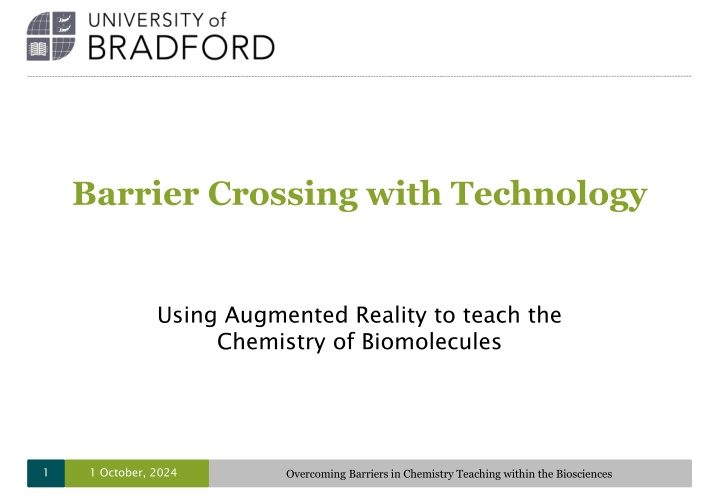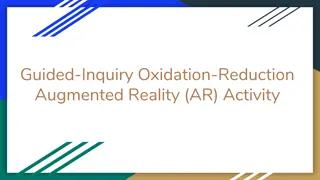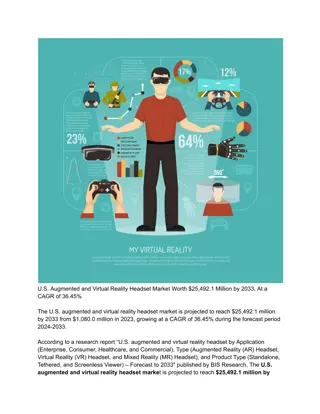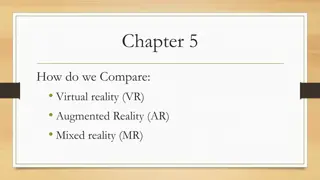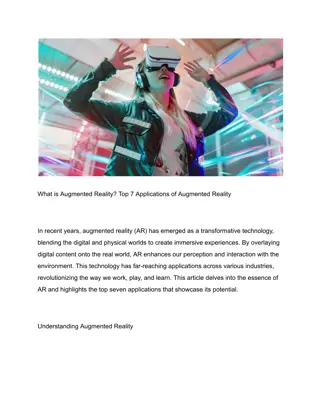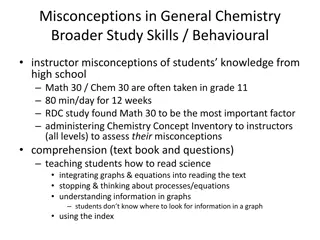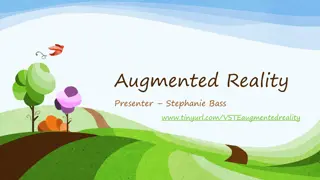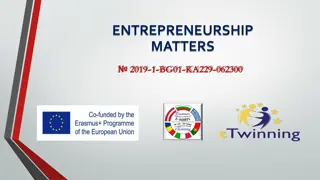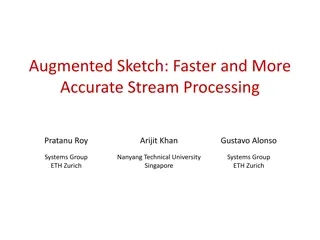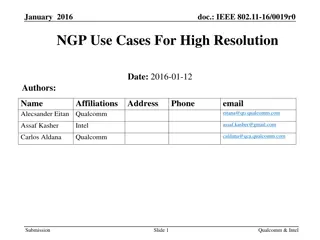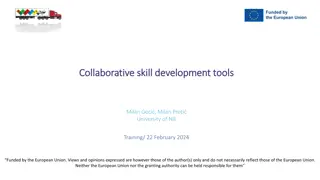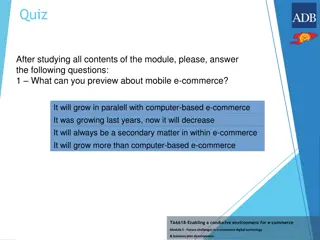Enhancing Chemistry Education with Augmented Reality Technology
Augmented reality technology offers innovative solutions to overcome barriers in teaching chemistry within the biosciences. By integrating AR tools such as interactive 3D images and simulations, students can explore the micro-world of biomolecules with higher comprehension and engagement. This approach reduces cognitive load, aids in visualizing complex biological systems, and facilitates inquiry-based learning. From visualizing patterns in data to understanding molecular structures, AR technology is revolutionizing how chemistry concepts are taught and understood.
Download Presentation

Please find below an Image/Link to download the presentation.
The content on the website is provided AS IS for your information and personal use only. It may not be sold, licensed, or shared on other websites without obtaining consent from the author.If you encounter any issues during the download, it is possible that the publisher has removed the file from their server.
You are allowed to download the files provided on this website for personal or commercial use, subject to the condition that they are used lawfully. All files are the property of their respective owners.
The content on the website is provided AS IS for your information and personal use only. It may not be sold, licensed, or shared on other websites without obtaining consent from the author.
E N D
Presentation Transcript
Barrier Crossing with Technology Using Augmented Reality to teach the Chemistry of Biomolecules 1 1 October, 2024 Overcoming Barriers in Chemistry Teaching within the Biosciences
How Technology Impacts Learning Comprehension of the 'microworld' in science, especially chemistry can be challenging for students Technology is becoming accepted as a central part of chemical education (Seery & McDonnell, Chem. Edu. Res. Pract., 2013) videos of reactions simulations Generally, technology becoming adopted across education e.g. Kahoot, Poll Everywhere, Pebblepad, VLEs Slide 2 1 October, 2024 Overcoming Barriers in Chemistry Teaching within the Biosciences
How Technology Impacts Learning technology can alleviate cognitive load significant for novice learners with new material e.g. online homework with step-wise manner use of simulations lead to higher achievement simpler simulations followed by more complex learning through guided student inquiry tools such as augmented reality (AR) can allow inquiry-based exploration of micro-worlds in science Cai et al., Comp. Human Behav., 2014 Sweller, Handbook of Research on Educational Communications and Technology, 2008 Mayer, Cambridge Handbook of Multimedia Learning, 2005 Garratt, Univ. Chem. Edu., 1997 Slide 3 1 October, 2024 Overcoming Barriers in Chemistry Teaching within the Biosciences
What is augmented reality? Images (computer-generated) superimposed on our reality Interactive 3D images Augments the environment around us Placement of objects An interactive extra dimension Unlike VR, no headset needed Smartphones Tablets PCs Myoglobin in the snow 4 1 October, 2024 Overcoming Barriers in Chemistry Teaching within the Biosciences
From the lab Data visualisation tools used extensively in our research Visualising patterns in complex data Modelling complex biological systems Viewing interactions and movement of biomolecules Technology enables researchers to examine complex detail easily https://sketchfab.com/models/cd46eadc56654e259cd9020ce4fb74d4 5 1 October, 2024 Overcoming Barriers in Chemistry Teaching within the Biosciences
to teaching Students can struggle linking the microscopic detail biological systems Simple structure Complex structure Noncovalent interactions Nucleotide: deoxyadenylate DNA 6 1 October, 2024 Overcoming Barriers in Chemistry Teaching within the Biosciences
Lets have a go! Handouts under your chair Download and install the Augment app (iPhone or Play Store) Scan the image on the handout Press the 3D button to interact with the molecule alone 7 1 October, 2024 Overcoming Barriers in Chemistry Teaching within the Biosciences
Assist with understanding complex structure Biomolecules and biomolecular interactions Investigate underlying stereochemistry and non-covalent interactions Free app used through scanning tracker images Scan computer screens Scan lecture slides View in any environment Enhance study 8 1 October, 2024 Overcoming Barriers in Chemistry Teaching within the Biosciences
AR was introduced in Biomolecules & Cells module Used to facilitate discussions Questions posed that prompted students to use AR with a focus e.g. identifying parallel and anti-parallel hydrogen patterns in -sheets AR was introduced in Biomolecules & Cells module Student Feedback Easy to use (simply scan an image with phone/tablet) Fun! Easier to engage with material through individual device Encouraged sharing and team work in small groups Valuable in independent study 9 1 October, 2024 Overcoming Barriers in Chemistry Teaching within the Biosciences
Impact of AR on Learning AR can be an equalizer learning chemistry felt rewarding Research has shown: larger influence on low-achieving students useful remedial teaching tool reduced memory decay after class students positively responded enjoyed exploration of chemistry with AR Using AR as an inquiry-based learning tool has significant supplemental learning effects Cai et al., Comp. Human Behav., 2014 Nunez et al., New Aspects Eng. Edu., 2008 Iordache et al., Studies Inform. Control, 2012 Slide 10 1 October, 2024 Overcoming Barriers in Chemistry Teaching within the Biosciences
Try it yourself J B Priestley Computer Lab (room 01.53) after lunch J B Priestley Computer Lab (room 01.53) after lunch Hands on tutorial to create your own AR models 11 1 October, 2024 Overcoming Barriers in Chemistry Teaching within the Biosciences
